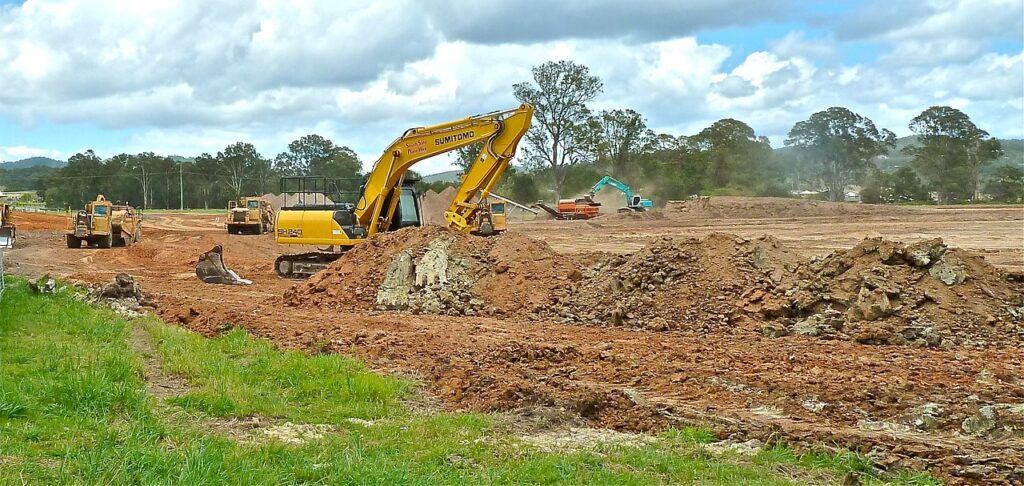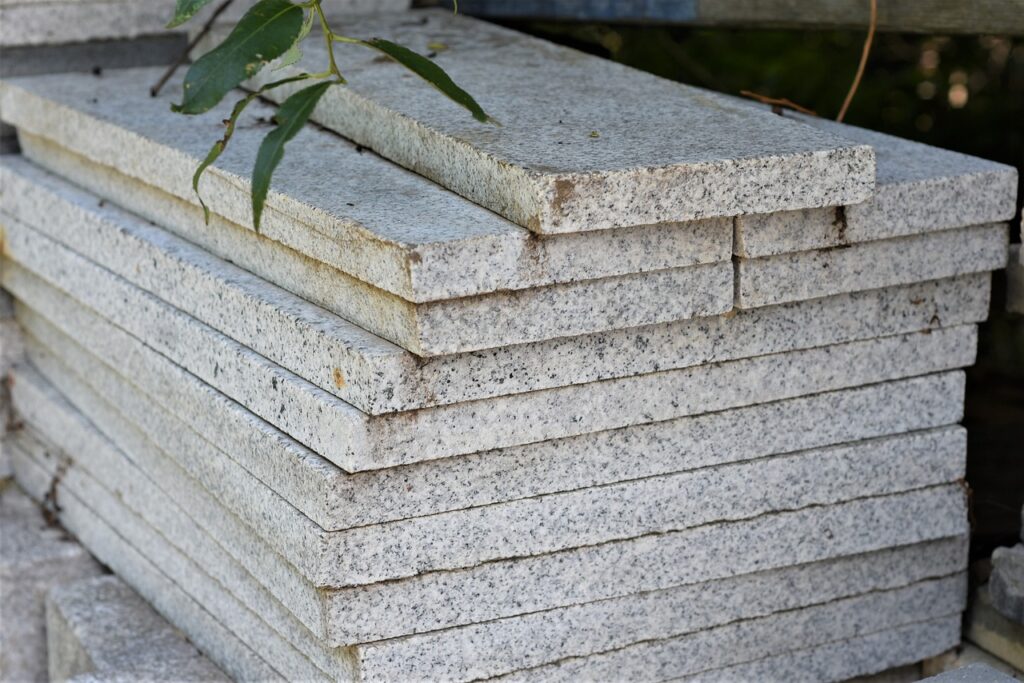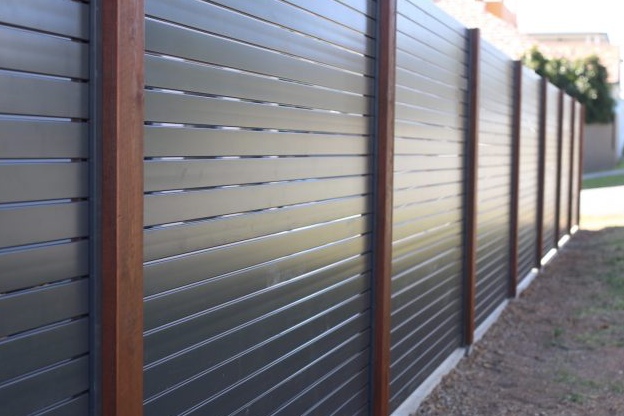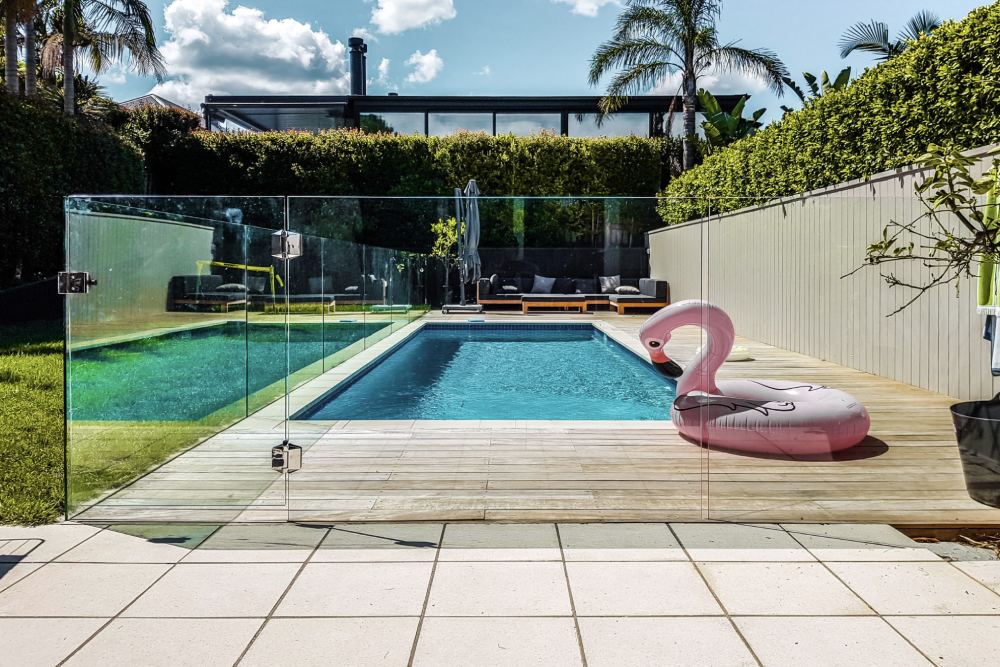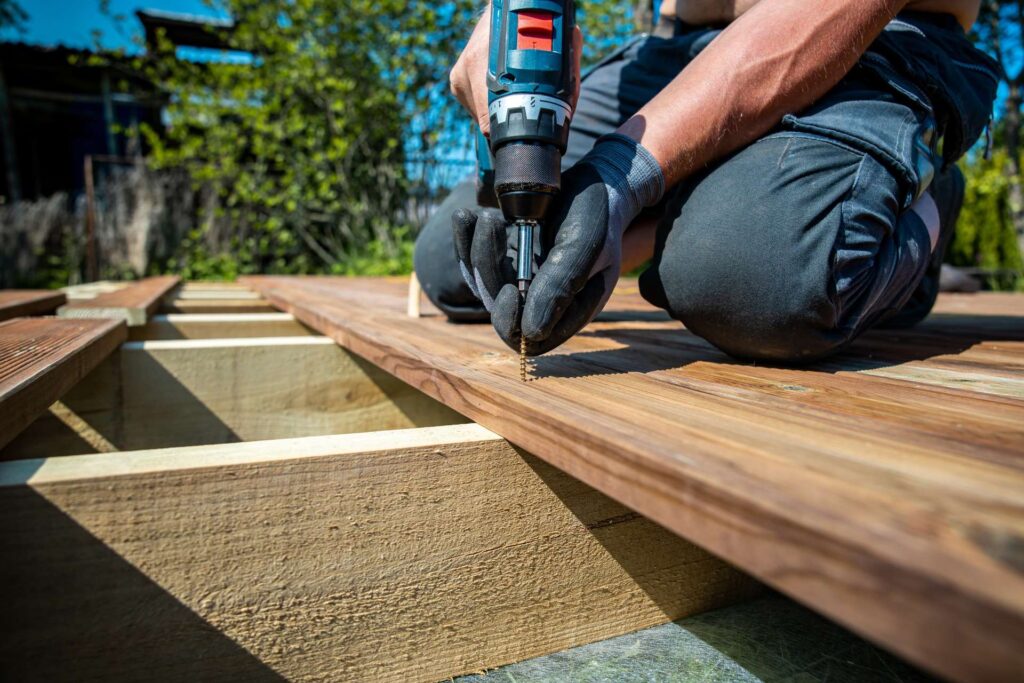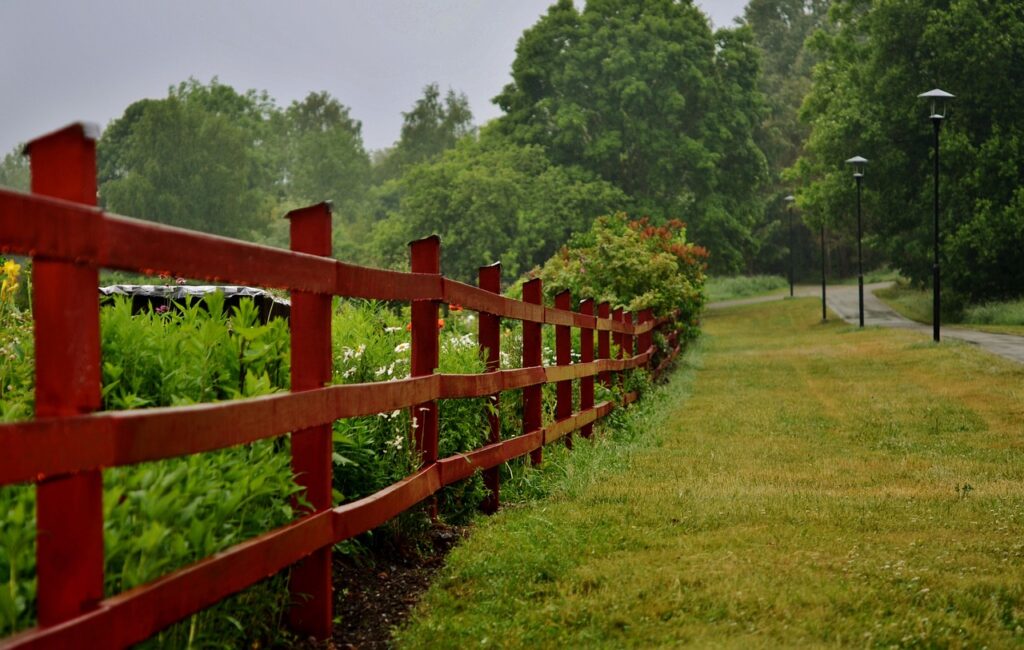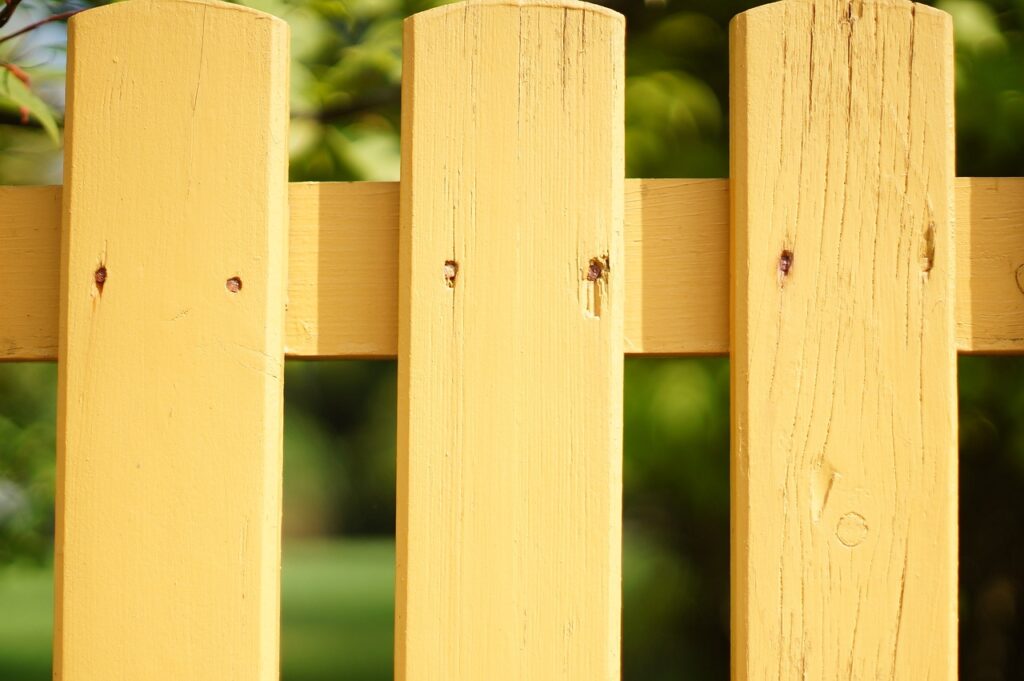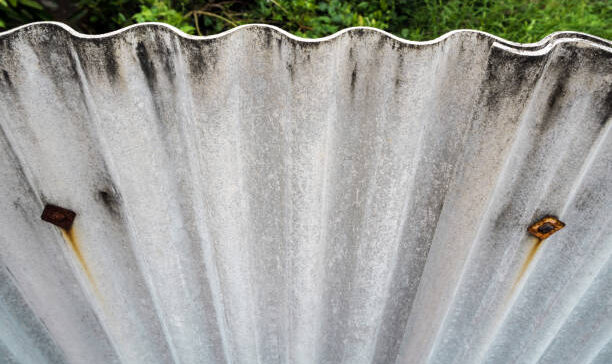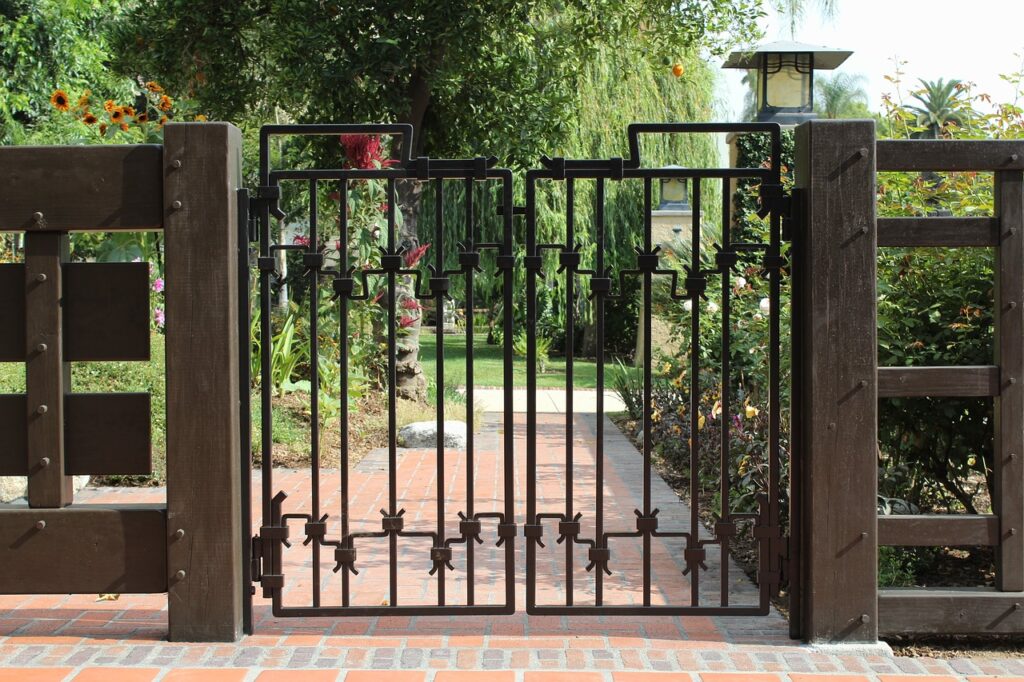Wood Fence Cost Calculator
Total Estimated Cost: NZD $0.00
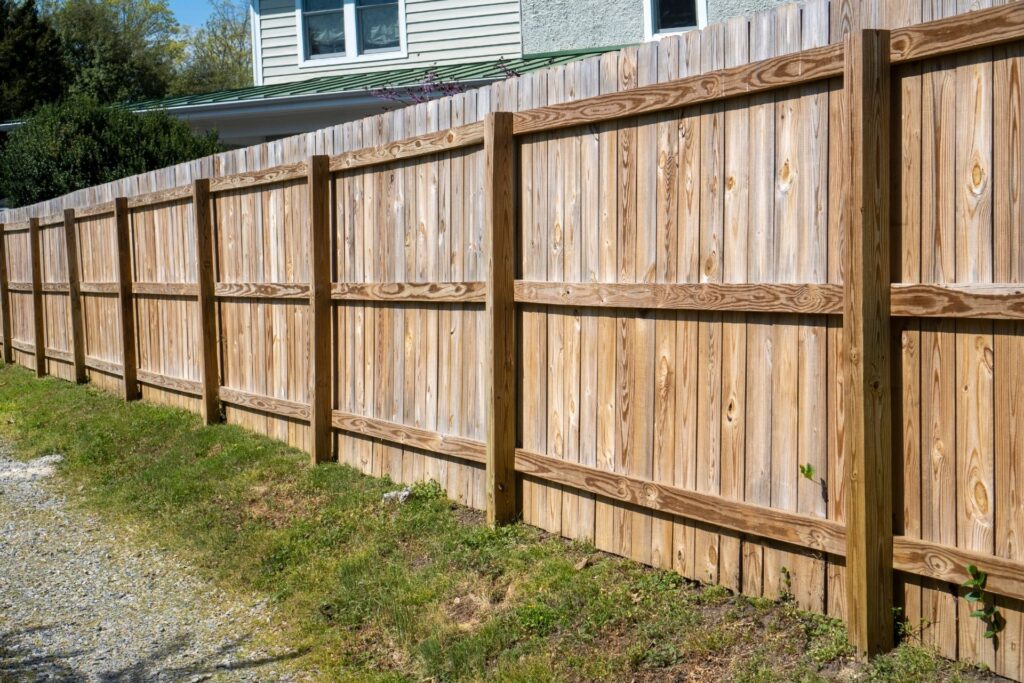
Welcome to your ultimate guide on planning and budgeting for a wood fence in New Zealand. Whether you’re looking to enhance your home’s privacy, add a touch of natural beauty to your property, or boost its overall security, a wood fence is a timeless choice that offers both practicality and aesthetic appeal. However, we all know that the cost of installing a new fence can be a significant investment, and that’s where a wood fence cost calculator comes into play. In this article, we’ll walk you through everything you need to know to accurately estimate the costs involved, from the type of wood you choose to the design, installation, and potential hidden expenses, ensuring you’re fully prepared to make informed decisions for your fencing project.
On average, the cost of installing a wood fence in New Zealand ranges from $100 to $200 per meter, depending on the type of wood, fence height, and complexity of the design. Using a wood fence cost calculator can help you estimate your total expenses more accurately, considering additional factors such as installation fees and ongoing maintenance.
- Wood Fence Cost Calculator
- The Appeal of Wood Fences
- Popular Wood Types in NZ
- Wood Type and Quality
- Fence Height and Length
- Design and Style Choices
- Installation Costs
- Permits and Regulations
- Step-by-Step Guide to Using a Wood Fence Cost Calculator
- Getting Realistic Estimates: The Importance of Accurate Data
- Maintenance Costs
- Potential Upgrades
- 3. Unforeseen Expenses
- Wood vs. Alternative Materials
- Why Choose Wood Despite the Cost?
- Smart Material Choices
- DIY vs. Professional Installation
- Seasonal Considerations
- Bulk Buying and Supplier Discounts
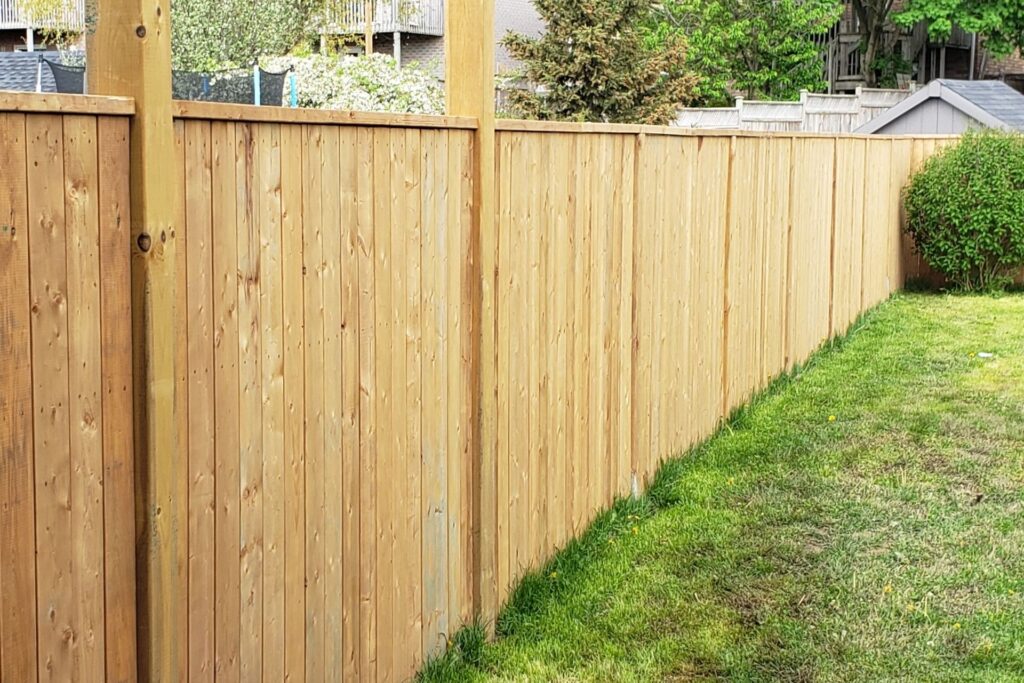
Why Install A Wood Fence
The Appeal of Wood Fences
When considering the installation of a fence for your property, wood emerges as a timeless and versatile choice that appeals to many homeowners. The natural beauty of wood is unmatched, offering an aesthetic appeal that blends seamlessly with various architectural styles, whether you have a modern, rustic, or traditional home. The warm, earthy tones of wood create a welcoming atmosphere and can be customized through different finishes and stains to suit your taste.
But the appeal of wood fences goes beyond just looks. They offer practical benefits that make them a worthwhile investment. For instance, wood fences provide excellent privacy, making your outdoor space feel like a secluded retreat. Whether you’re enjoying a quiet morning coffee or hosting a lively backyard gathering, a wood fence ensures that your activities remain private. Additionally, wood fences are effective at enhancing the security of your property. They serve as a physical barrier, deterring intruders and keeping pets and children safely within the confines of your yard.
Moreover, the installation of a wood fence can significantly boost the value of your property. Potential buyers often appreciate the added privacy, security, and aesthetic appeal that a well-maintained wood fence provides. This makes it a smart choice if you’re looking to increase the resale value of your home.
Popular Wood Types in NZ
In New Zealand, choosing the right type of wood for your fence is crucial, as it directly impacts the fence’s durability, appearance, and cost. Several wood types are commonly used for fencing in NZ, each with its unique characteristics.
- Pine: Pine is one of the most popular choices for fencing in New Zealand, and for good reason. It’s an affordable option that’s readily available, making it an economical choice for large fencing projects. Treated pine is resistant to rot and insect damage, ensuring your fence lasts for many years. However, it’s worth noting that pine, while durable, may require more frequent maintenance compared to some other wood types, as it can warp or crack over time if not properly cared for.
- Macrocarpa: This wood type is another favorite among Kiwi homeowners. Macrocarpa is naturally resistant to decay and doesn’t require chemical treatments, making it an eco-friendly option. It has a distinct, attractive grain and weathers beautifully, developing a silvery patina over time. While macrocarpa is more expensive than pine, its durability and low maintenance requirements make it a cost-effective option in the long run.
- Cedar: Cedar is prized for its rich color and natural resistance to decay and insects. It’s a premium wood option that offers a luxurious finish, making it ideal for homeowners who want to make a statement with their fencing. Cedar is lightweight yet strong, and it doesn’t warp or shrink, which means your fence will maintain its shape and appearance for many years. The main downside of cedar is its cost; it’s typically more expensive than both pine and macrocarpa. However, the investment can be worthwhile if you’re looking for a high-end, low-maintenance fence.
Each wood type offers its own set of advantages and considerations, so it’s important to choose the one that best suits your budget, aesthetic preferences, and maintenance capabilities. Whether you opt for the affordability of pine, the durability of macrocarpa, or the premium appeal of cedar, a well-chosen wood fence can enhance the beauty, security, and value of your property.

Factors That Affect Wood Fence Costs In NZ
When planning to install a wood fence in New Zealand, it’s essential to understand the various factors that can significantly influence the overall cost. From the type of wood you choose to the design, installation, and legal requirements, each element plays a crucial role in determining your budget. Here’s a detailed breakdown of these factors:
Wood Type and Quality
The type and quality of wood are fundamental factors that impact the cost of a fence. Different wood species vary in price due to their availability, durability, and aesthetic appeal. For instance, premium woods like Cedar or Redwood are more expensive but offer superior resistance to rot and pests, making them a long-term investment. On the other hand, more common and affordable options like Pine or Macrocarpa might require additional treatment to extend their lifespan, especially in New Zealand’s diverse climate.
Treated wood is generally more expensive than untreated wood because it undergoes a process that enhances its resistance to moisture, decay, and insect damage. However, the initial higher cost of treated wood can be offset by its longevity and reduced maintenance needs. In contrast, untreated wood is cheaper upfront but may incur higher maintenance costs over time, as it is more susceptible to weathering and decay.
Fence Height and Length
The dimensions of your fence, particularly its height and length, are directly proportional to the overall cost. A taller fence requires more materials, which increases the expense. In New Zealand, typical fence heights range from 1.2 to 2.4 meters, with higher fences providing more privacy but at a higher cost.
Length is another critical factor; the more meters of fencing required, the greater the expense. On average, the cost per meter of fencing in New Zealand can vary depending on the wood type and height, with a general range of $50 to $150 per meter. It’s important to measure your property accurately to estimate costs and avoid unexpected expenses.
Design and Style Choices
The design and style of your fence significantly influence both the material and labor costs. Simple designs, such as basic pickets or panel fences, are usually more affordable because they require less material and labor. However, more intricate styles, like lattice or custom designs, can add a unique aesthetic appeal to your property but come with increased costs due to the additional craftsmanship and materials required.
If you opt for a custom design, expect to pay a premium. Custom fences are tailored to your specific preferences and property layout, making them more expensive but offering a unique look that can enhance your home’s curb appeal.
Installation Costs
Installation costs can vary widely depending on whether you choose to install the fence yourself or hire a professional. DIY installation is cheaper since you’re only paying for materials and your time. However, it requires a certain level of skill, and any mistakes could lead to additional costs down the line.
Hiring a professional installer in New Zealand typically costs between $50 and $100 per hour, depending on the complexity of the job. Factors such as terrain and site accessibility can also affect labor costs. For example, installing a fence on a steep slope or rocky ground requires more effort and time, increasing the overall cost.
Permits and Regulations
Before installing a fence in New Zealand, it’s crucial to check local regulations and whether you need any permits. Some areas have strict guidelines regarding fence height, style, and placement, especially in suburban or heritage areas.
Failure to comply with these regulations can result in fines or the need to alter your fence, leading to additional costs. Permit fees vary depending on your location and the specifics of your fence design. It’s wise to factor these into your budget early in the planning process to avoid surprises.
In summary, the cost of a wood fence in New Zealand is influenced by several factors, including the type and quality of wood, the dimensions of the fence, the design and style choices, installation methods, and local regulations. By considering each of these elements carefully, you can better estimate your overall expenses and ensure that your new fence meets both your aesthetic and budgetary requirements.

How To Use A Wood Fence Cost Calculator In NZ
Building a wood fence in New Zealand requires careful planning, and understanding the costs involved is a crucial first step. Fortunately, an online wood fence cost calculator can help you estimate the expenses accurately. This guide will walk you through the process, ensuring you have all the necessary information at your fingertips to make an informed decision.
Step-by-Step Guide to Using a Wood Fence Cost Calculator
1. Finding the Right Calculator
- Start by selecting a reliable online wood fence cost calculator. Many websites offer this tool, but it’s essential to choose one tailored to the New Zealand market, which considers local prices and materials.
2. Gather Necessary Information
- Measurements: Accurate measurements of the area you plan to fence are vital. Measure the length of the boundary where the fence will be installed, noting any variations in terrain that could impact the installation process.
- Wood Type: Determine the type of wood you want to use. Common options in New Zealand include pine, cedar, and hardwood. Each type of wood has different cost implications and durability, so consider your budget and long-term maintenance needs.
- Fence Style: Decide on the style of fence you want. Options like picket, panel, or post-and-rail can influence the cost significantly. Each style requires different amounts of wood and labor, so select one that fits your aesthetic preferences and functional requirements.
3. Inputting Data
- Once you have all the required information, input it into the calculator. Start with the total length of the fence, then select your chosen wood type and style. Some calculators may ask for additional details like the height of the fence or specific design elements.
- Double-check your entries to ensure they are correct. Even small errors in measurements or selections can lead to inaccurate estimates.
4. Reviewing the Estimate
- After inputting all the data, the calculator will provide an estimate of the total cost. This should include materials, labor, and any additional expenses like gates or decorative elements.
- Take note of the breakdown provided. Understanding where your money is going can help you make adjustments if necessary, such as choosing a different wood type or simplifying the design to stay within your budget.
Getting Realistic Estimates: The Importance of Accurate Data
To get the most realistic estimate from a wood fence cost calculator, accuracy is crucial. Ensure that your measurements are precise and that you’ve chosen the right materials and style to reflect your vision for the fence. An accurate estimate helps you avoid unexpected costs down the line and makes the budgeting process more straightforward.
In New Zealand, specific calculators are available that cater to local pricing and material availability. Utilizing these resources can provide a more accurate estimate than generic calculators that may not consider regional differences. Always look for calculators that offer options relevant to the NZ market to get the most reliable figures.
By following this guide, you’ll be well-equipped to use a wood fence cost calculator effectively, helping you plan and budget for your fencing project with confidence.

Additional Costs To Consider
When planning to install a wood fence, it’s crucial to account for additional costs beyond the initial installation. These extra expenses can significantly impact your overall budget and should be considered to avoid surprises down the line. Here’s a breakdown of some key costs you might encounter:
Maintenance Costs
One of the most important factors to consider when installing a wood fence is the ongoing maintenance required to keep it in good condition. Unlike other materials like vinyl or metal, wood is susceptible to weathering, decay, and insect damage, especially in New Zealand’s diverse climate.
- Regular Staining and Sealing: To protect your wood fence from the elements, regular staining and sealing are essential. In New Zealand, where rainfall and humidity can vary widely, it’s recommended to apply a sealant at least once a year. Staining not only enhances the fence’s appearance but also extends its lifespan by protecting it from UV rays and moisture.
- Repairs: Over time, wood fences may require repairs due to factors such as rot, warping, or insect infestation. Replacing damaged boards, posts, or sections can add up in cost, particularly if the fence is extensive or exposed to harsh weather conditions.
- Cost Estimates: The average cost of maintenance for a wood fence in New Zealand can range from NZD 200 to NZD 500 annually, depending on the size of the fence and the extent of the work needed. Neglecting maintenance can lead to more significant expenses in the long run, so it’s wise to budget for these ongoing costs.
Potential Upgrades
While a basic wood fence serves its primary purpose of providing privacy and security, many homeowners choose to enhance their fence with various upgrades. These optional features can improve the functionality and aesthetic appeal of your fence but will also increase the overall cost.
- Gates: Adding one or more gates to your fence is a common upgrade. The type of gate whether it’s a simple pedestrian gate or a more elaborate driveway gate can influence the price. Gates with automation features, such as remote opening or keypad entry, can further increase costs.
- Decorative Elements: Adding decorative elements like lattice tops, post caps, or custom carvings can give your fence a unique look. These enhancements contribute to curb appeal but also add to the installation and maintenance expenses.
- Automation: For those seeking convenience, automation options such as electric gates or integrated lighting systems can be added. These features offer added security and ease of use but require a more significant initial investment.
- Cost Impact: Upgrades can add anywhere from NZD 500 to several thousand dollars to the total project cost, depending on the complexity and number of features selected. When planning your fence installation, consider which upgrades are essential for your needs and which can be added later.
3. Unforeseen Expenses
Even with meticulous planning, unexpected costs can arise during or after the installation of your wood fence. These unforeseen expenses can strain your budget if not anticipated.
- Soil Testing: Depending on your location, soil testing might be necessary to determine the stability and composition of the ground where the fence posts will be installed. In some cases, specialized treatments or additional materials may be needed to ensure the fence’s stability.
- Property Slope Adjustments: If your property is not level, additional work may be required to adjust the fence design to accommodate slopes or uneven ground. This could involve grading, using stepped fence panels, or installing retaining walls, all of which can add to the cost.
- Budgeting for Uncertainties: To prepare for these potential surprises, it’s advisable to set aside an extra 10-20% of your total budget as a contingency fund. This buffer will help cover any additional expenses without derailing your project.
By carefully considering these additional costs maintenance, potential upgrades, and unforeseen expenses you can better plan and budget for your wood fence installation in New Zealand. Proper preparation will ensure that your fence not only meets your immediate needs but also remains a durable and attractive feature of your property for years to come.

Comparing Wood Fence Costs With Other Materials
When choosing the right material for your fence, understanding the cost implications and benefits of each option is crucial. Wood remains one of the most popular choices for fencing, but how does it stack up against other materials like metal, vinyl, or composite? Let’s dive into a detailed comparison.
Wood vs. Alternative Materials
Wood Fences
Wood has been a traditional fencing material for centuries, known for its natural beauty and versatility. The cost of a wood fence varies significantly depending on the type of wood used, with options ranging from affordable pine to more expensive cedar or redwood.
Metal Fences
Metal fences, including options like aluminum, steel, or wrought iron, are generally more durable and require less maintenance than wood. However, they often come with a higher upfront cost. Metal fences provide a modern, sleek look and are particularly effective for security, but they lack the warm, natural appearance of wood.
Vinyl Fences
Vinyl fences have gained popularity due to their low maintenance and long lifespan. They are resistant to rot, pests, and weather, making them a practical choice. Although the initial cost of vinyl fencing is higher than wood, the long-term savings on maintenance can make it more cost-effective over time. However, some homeowners find that vinyl lacks the character and customization options that wood offers.
Composite Fences
Composite fencing is made from a blend of wood fibers and plastic, offering the best of both worlds: the look of wood with the durability of synthetic materials. Composite fences are highly resistant to rot and insects, and they require minimal maintenance. The downside is the cost, as composite fences tend to be among the most expensive options available.
Cost Comparison
- Wood: $15 to $30 per linear foot (varies by wood type)
- Metal: $20 to $40 per linear foot (varies by metal type)
- Vinyl: $20 to $35 per linear foot
- Composite: $25 to $45 per linear foot
While wood is generally less expensive upfront compared to metal and composite, it requires regular maintenance, such as staining or sealing, which adds to the long-term cost. Vinyl and composite, though pricier initially, offer savings in maintenance and longevity.
Why Choose Wood Despite the Cost?
Despite the potential for higher long-term costs, many homeowners continue to choose wood fences. Here’s why:
Aesthetic Appeal
Wood fences provide a timeless, natural look that can enhance the curb appeal of any home. The warmth and charm of wood are unmatched, and it can be customized to fit various architectural styles through painting, staining, or carving.
Customization Options
Wood is highly versatile and can be tailored to your specific needs. Whether you prefer a traditional picket fence, a privacy fence, or a more decorative design, wood allows for a high level of personalization. This customization extends to the height, style, and finish of the fence.
Environmental Considerations
For those concerned about environmental impact, wood is a renewable resource. When sourced from sustainably managed forests, wood can be an eco-friendly option. Additionally, wood fences can be repaired easily, reducing waste compared to replacing entire sections of metal or vinyl fencing.
Cost-Effectiveness in Certain Contexts
In some regions, the cost of wood might be lower due to local availability, making it a more economical choice. Moreover, if you’re handy, you can save on labor costs by installing a wood fence yourself, which is often simpler than installing metal or vinyl fencing.
In conclusion, while wood fences may come with certain costs and maintenance requirements, their aesthetic appeal, customization potential, and eco-friendliness make them a worthwhile investment for many homeowners. Whether you prioritize beauty, flexibility, or sustainability, wood offers unique advantages that other materials may not fully replicate. When making your decision, consider both the short-term and long-term costs alongside the specific needs of your property to determine the best fencing material for you.

Top Tips For Saving Money On Your Wood Fence In NZ
When it comes to installing a wood fence in New Zealand, managing costs effectively is key. By making informed choices, you can achieve a high-quality, long-lasting fence without overspending. Here are some top tips to help you save money on your wood fence project.
Smart Material Choices
Choosing the right materials is one of the most important steps in reducing the overall cost of your wood fence. Opt for materials that offer a balance between durability and affordability. For instance, treated pine is a popular choice in New Zealand because it is both economical and resistant to rot and pests. Another option is hardwood, which, while more expensive upfront, offers superior longevity, potentially saving money on repairs and replacements in the long run.
It’s also worth considering alternative materials like composite wood, which, although slightly pricier than natural wood, requires less maintenance over time. By weighing the initial costs against the long-term benefits, you can make a smart material choice that fits your budget and provides value over the fence’s lifespan.
DIY vs. Professional Installation
Another significant decision that impacts your budget is whether to install the fence yourself or hire a professional. DIY installation can save you a substantial amount of money, especially if you have the tools and skills needed for the job. There are numerous online resources, including video tutorials and detailed guides, that can help you through the process.
However, DIY is not always the best option. If you’re unfamiliar with construction work or don’t have the necessary time, hiring a professional might be more cost-effective in the long run. A poorly installed fence can lead to additional expenses for repairs or even a full replacement. When deciding between DIY and professional installation, consider your own abilities, the complexity of the project, and the potential long-term costs associated with mistakes.
Seasonal Considerations
Timing can play a crucial role in saving money on your wood fence. In New Zealand, the demand for fencing materials and contractors fluctuates with the seasons. Typically, the peak season for fencing projects is during the warmer months when the weather is more conducive to outdoor work. During these times, prices for materials and labor can be higher due to increased demand.
To save money, consider scheduling your fence installation during the off-peak season, such as late autumn or winter. Many suppliers and contractors offer discounts during these slower periods, which can significantly reduce your overall costs. Additionally, purchasing materials in advance, when prices are lower, and storing them until you’re ready to begin the project can also lead to substantial savings.
Bulk Buying and Supplier Discounts
Purchasing your fencing materials in bulk is another effective way to cut costs. Many suppliers offer discounts for larger orders, which can lower the price per unit of wood, nails, and other necessary materials. If you’re planning to install a large fence or multiple fences, bulk buying is particularly advantageous.
It’s also beneficial to shop around and compare prices from different local suppliers. Some suppliers may offer discounts or special promotions that can help you save money. Establishing a good relationship with a local supplier might even lead to better deals in the future. Always ask about any available discounts or if they can match a competitor’s price.
By following these tips, you can make your wood fence project in New Zealand more affordable without compromising on quality. Smart material choices, thoughtful timing, and strategic purchasing are key strategies that will help you achieve a beautiful, durable fence while staying within your budget.

FAQs: About The Wood Fence Cost Calculator NZ
Conclusion
We’ve covered all the essential aspects of planning a wood fence project, from understanding material and labor costs to exploring various styles and finishes. With this comprehensive guide, you’re now equipped with the knowledge needed to make informed decisions. Now is the perfect time to take the next step in your project. I encourage you to start planning your wood fence by utilizing the cost calculator provided, which will give you a clear estimate tailored to your specific needs. Don’t hesitate to reach out for quotes or consult with professionals to ensure your project is completed efficiently and to your satisfaction.
Find A Professional Fencing Company Near You!
- Farm Fencing Waikato
- Fence Builders Alexandra, Clyde & Cromwell
- Fence Builders Auckland
- Fence Builders Central Otago
- Fence Builders Christchurch
- Fence Builders Hamilton Waikato
- Fence Builders Invercargill
- Fence Builders Kapiti
- Fence Builders Lower Hutt
- Fence Builders Manawatu
- Fence Builders Palmerston North
- Fence Builders Queenstown
- Fence Builders Taupo
- Fence Builders Upper Hutt
- Fence Builders Wanaka
- Fence Builders Wellington
- Fencing Contractors Levin
- Fencing Contractors Napier
- Fencing Hastings
- Fencing Hawkes Bay
- Fencing Kerikeri
- Fencing Mangawhai
- Fencing Nelson
- Fencing New Plymouth
- Fencing Paihia
- Fencing Taranaki, New Plymouth
- Fencing Warkworth
About the Author:
Mike Veail is a recognized digital marketing expert with over 6 years of experience in helping tradespeople and small businesses thrive online. A former quantity surveyor, Mike combines deep industry knowledge with hands-on expertise in SEO and Google Ads. His marketing strategies are tailored to the specific needs of the trades sector, helping businesses increase visibility and generate more leads through proven, ethical methods.
Mike has successfully partnered with numerous companies, establishing a track record of delivering measurable results. His work has been featured across various platforms that showcase his expertise in lead generation and online marketing for the trades sector.
Learn more about Mike's experience and services at https://theleadguy.online or follow him on social media:




